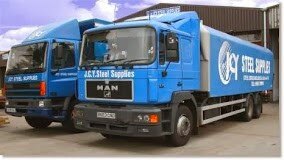Three forces every service center needs on its radar
Three forces every service center needs on its radar and how a purpose-built ERP keeps you ahead
Over the last twelve months, the metals landscape has moved faster than a coil through a blanking line. Decarbonization pressures are turning into real costs, raw-material pricing is swinging on headline news, and smarter factories are no longer a science project - they are winning market share. Below are the three forces shaping the market right now and the practical steps a metal-specific ERP like iMetal can take off your task list today.
1. Carbon accountability stops being a talking point and starts hitting the P&L
The EU Carbon Border Adjustment Mechanism (CBAM) entered its transitional reporting phase in 2023 and will become fully billable in 2026. That gives exporters of steel, aluminum, and downstream fabricated products fewer than eighteen months to prove the embedded CO₂ in every tonne they ship - or pay the levy their customers will pass straight back down the chain.
Taxation and Customs Union
Carbon Trust
North American mills and service centers selling into Europe, or supplying OEMs that do, are racing to stitch together material certificates, mill test reports, freight data, and energy-mix calculations. If your ERP cannot link heat and lot data to a carbon factor automatically, you are facing a mountain of spreadsheets. iMetal already tracks dimensional inventory by heat, weight, and length; adding CO₂ per tonne as another attribute means you can run a CBAM report in minutes and prove compliance while competitors scramble.
Action point: Begin capturing scope-1 and scope-2 emissions at the transaction level now. By the time the charge is due, you will have two full years of auditable history.
2. Raw-material volatility is back, and margin control trumps prediction
Iron-ore prices are holding above $90 per tonne despite a five-percent drop in Chinese imports and the looming Simandou mine start-up. Analysts who expected a 50 Mt surplus in 2025 have cut that forecast by half, pushing the bearish floor up to the $80–$85 range.
Reuters
Copper, aluminum, and nickel are riding their own roller-coasters as traders rush shipments ahead of new US tariff threats.
Fastmarkets
When spreads move this fast, locking in a quote Monday and shipping Friday can erase your gross profit if your cost and sell prices are not synced in real time. A generic ERP that relies on overnight batch updates will not cut it. iMetal’s live costing pulls current buy prices from your supplier contracts or the exchange feed and pushes alerts to sales if a quoted line falls below floor margin. That keeps your inside reps efficient and your margins intact without layers of manual overrides.
Action point: Integrate live feed or contract cost updates into your ERP and enforce floor-margin rules at order entry, not after the invoice hits.
3. AI leaves the pilot phase and moves onto your shop floor
Smart-factory tech promised plenty; 2025 is the year it starts paying dividends. In Deloitte’s May survey of 600 manufacturing executives, 29 percent already run AI or machine-learning at the plant or network level, and another 38 percent have generative-AI pilots underway.
Deloitte United States
Among metal fabricators the hunger is concrete: they want actionable analytics from the data they already own inside their ERP.
MetalForming Magazine
Practical wins are emerging fast:
Dynamic coil-to-sheet nesting – AI chooses the cut schedule that minimizes scrap on mixed-dimension orders.
Predictive maintenance – Machine-learning models read vibration and motor-current logs stored in iMetal’s MES module and flag likely downtime before a bearing seizes.
Demand forecasting – Generative AI sifts three years of order history and external price indices, then suggests safety-stock levels that match current volatility.
The common denominator is clean, structured data. An industry-agnostic system may capture your transactions, but it will not understand nominal gauge changes or weight-per-inch rules out of the box. That limits what any AI overlay can do. Because iMetal is built around coil, bar, plate, and tube logic, the data is already normalized for metals use cases, so advanced analytics drop in with far less effort.
Action point: Audit your existing ERP data for consistency - heat, location, and dimension fields must be complete - then pilot one AI use case that delivers measurable value in under 90 days.
Where to go from here
A decade ago, optimizing a service center meant squeezing better throughput from the cut-to-length line. In 2025, the competitive delta sits in data: emissions traceability, real-time cost control, and AI-driven insight. If your current system was bolted onto metals rather than engineered for it, the gap between you and the market leaders widens every quarter.
Want to see how iMetal puts these capabilities on your screen? Book a 30-minute demo, and we will map one of your live challenges - carbon reporting, volatile costing, or AI analytics - to a workflow you can run next week.
Your operations team will appreciate the practicality, your CFO will see the margin impact, and your customers will feel the difference the next time a spec change lands at 4 p.m.
You May Also Like
These Related Stories

Why Metals Service Centers Can’t Afford to Ignore ERP Modernization

Meet the team: Spotlight on Mark Beard



No Comments Yet
Let us know what you think